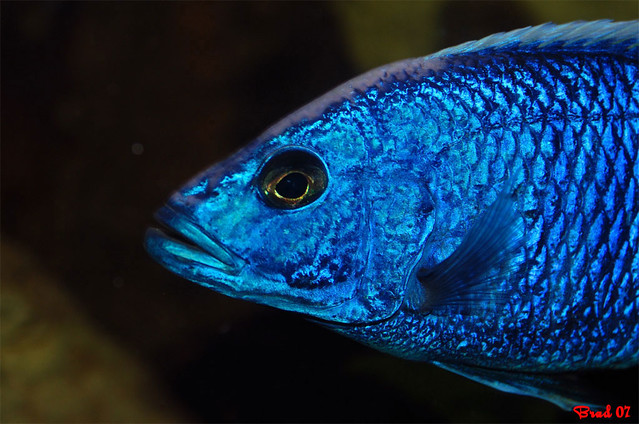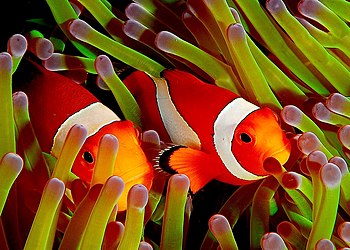Electric blue cichlids are extremely beautiful fishes and are stupendous in freshwater aquarium keeping. They possess the typical shape of the cichlidae family which is sleek and bullet shaped body.
The other name of a blue cichlid is Sciaenochromis fryeri, which can be placed in the aquarium together with other Lake Malawi cichlids if given sufficient and capacious tank of about 70 gallons or even more if possible and decorate it with plenty of rockwork. Live plants are not very compatible with blue cichlids because of its excessive aggressiveness and agility. However, aquatic plants may be beneficial to other aquarium inhabitants. Electric blue cichlids larger than three inches have the tendency to uproot any plants and may be aggressive towards small fishes.
 |
| Photo by Bradsview |
They are originally found in the Northern end of Africa and are considered as an "old species" because of its wide distribution in lakes and its breeding technique. Most of the blue cichlids caught are from Likoma. The natural habitat of a cichlid is deep water over rocky areas. They can grow as much as 20 centimeters.
They are considered as a mouth brooder fish. The female electric blue cichlid will fertilized and carry its eggs in her mouth within the period of twelve to eighteen days, after that the fry are released. The female can spawn up to 50 - 60 eggs or a maximum of 100 eggs. Spawning is normally done in flat rocks or surface in the wild but in aquarium the males are the ones who make the nest.
These variety thrive well in an aquarium water chemistry of 72 - 82 degrees Fahrenheit with a pH level of 7.8 -8.5 and dH of 10 - 15. The temperature may range from 25 - 28 degrees Celsius. Appropriate tank size would be a minimum of 4 - 6 inches in length. The adequate ratio for cichlids inside the tank is one male to five or 7 female blue cichlid.
In the wild this fishes mainly feed in the fry of other species but when kept in aquariums the proper way to provide food is once or twice a day. Each meal should only be given the amount that may be consumed within five minutes. It is best to feed them with live foods like feeder gruppies as well as commercial meaty foods such as freeze-dried or frozen blood worms or brine shrimp. More so, supplement live foods with pellets. Bear in mind that pellets are only supplements to their staple food and should not be fed as their primary diet.
Breeding electric blue cichlid is easy as long as it is provided with the proper care and diet. Read more about how to breed this variety of cichlid, it can be rewarding in your part.
Lacey Bryant is a cichlid enthusiast. Article Source: EzineArticles |








